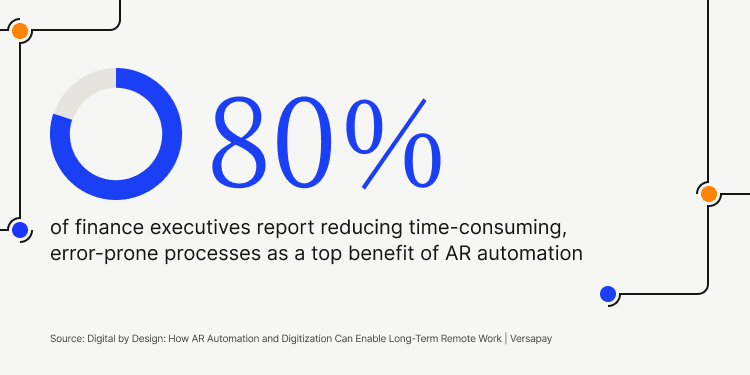How to Set Accounts Receivable Goals

Setting effective accounts receivable goals involves a systematic process that considers the specific needs and objectives of your business. Here's a step-by-step guide on how to set accounts receivable goals:
-
Understand Your Business Objectives:
- Begin by aligning accounts receivable goals with broader business objectives. Consider factors such as financial stability, cash flow improvement, risk management, and customer satisfaction.
-
Conduct a Comprehensive Analysis:
- Evaluate your current accounts receivable performance by analyzing key metrics such as Days Sales Outstanding (DSO), aging reports, bad debt ratio, and collection efficiency. Identify areas that need improvement.
-
Define Specific and Measurable Goals:
- Ensure that each goal is specific, measurable, achievable, relevant, and time-bound (SMART). For example, instead of a vague goal like "reduce overdue payments," set a SMART goal like "decrease DSO by 10% within the next quarter."
-
Prioritize Goals:
- Prioritize goals based on their impact on overall business objectives. Consider addressing critical issues first, such as reducing overdue payments or minimizing bad debt.
-
Set Realistic Targets:
- Establish targets that are challenging yet realistic. Setting overly ambitious goals may lead to frustration, while overly conservative goals may not drive the desired improvements.
-
Consider Industry Benchmarks:
- Benchmark your accounts receivable goals against industry standards. Research and analyze industry benchmarks for DSO, bad debt ratios, and other relevant metrics to set targets that align with best practices.
-
Involve Key Stakeholders:
- Collaborate with key stakeholders, including finance, sales, customer service, and executive leadership, to gather insights and perspectives. This ensures that goals are aligned with the overall organizational strategy.
-
Identify Key Performance Indicators (KPIs):
- Determine the key performance indicators that will measure progress toward each goal. Common KPIs include DSO, aging reports, collection efficiency, bad debt ratio, and customer satisfaction scores.
-
Break Down Goals into Actionable Steps:
- Break down each goal into specific, actionable steps. Define the tasks, responsibilities, and timelines for achieving each component of the goal.
-
Establish Clear Accountability:
- Clearly define roles and responsibilities for individuals or teams responsible for achieving each goal. Establish a sense of accountability and ownership to ensure commitment to the goals.
-
Communicate Goals Across the Organization:
- Communicate accounts receivable goals across the organization to ensure awareness and alignment. Engage employees in the process and emphasize the importance of achieving these goals for overall business success.
-
Implement Tracking and Monitoring Systems:
- Implement systems for tracking and monitoring progress toward goals. Use software, reporting tools, and dashboards to regularly assess performance against key metrics.
-
Review and Adjust Goals Periodically:
- Regularly review accounts receivable goals to assess progress and adjust them if necessary. Consider changes in business conditions, market dynamics, or internal factors that may impact the feasibility of the goals.
-
Provide Training and Resources:
- Ensure that the accounts receivable team has the necessary training, resources, and tools to achieve the goals. Continuous improvement may involve enhancing skills, adopting new technologies, or implementing best practices.
-
Celebrate Achievements:
- Celebrate milestones and achievements along the way. Recognize and reward individuals or teams for their contributions to meeting or exceeding accounts receivable goals.
-
Learn from Challenges and Setbacks:
- Embrace challenges and setbacks as opportunities for learning and improvement. Analyze the root causes of issues and use insights to refine goals and strategies.
-
Maintain Flexibility:
- Stay flexible and adapt goals as needed to respond to changing business conditions. Flexibility allows your organization to remain agile and responsive to evolving circumstances.
-
Seek Feedback and Continuous Improvement:
- Encourage feedback from employees involved in the accounts receivable process. Use feedback to identify areas for improvement and continuously refine your goals and strategies.
By following these steps, you can create a structured and effective approach to setting accounts receivable goals that align with your organization's broader objectives and contribute to financial success.
Thank you,